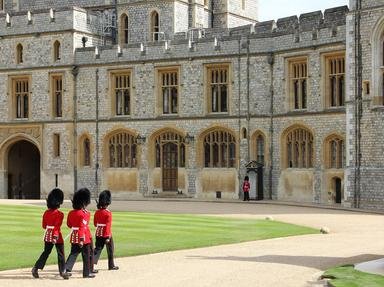Quiz Answer Key and Fun Facts
1. He came, he saw and he conquered. His instinct was to engage in matters of state by leading his armies on the battlefield. In 1087 this was to prove his undoing as he was fatally wounded by his horse's irons as he led his forces in the pillage of Mantes, near Paris. Which king was he?
2. Not much doubt about the cause of this king's death; he died due to lack of blood to the brain after his head had been separated from the rest of his body by an executioner's axe. The first King of England to be sentenced to death by a court, convicted of treason for, amongst other things, his role in the two civil wars that afflicted England in the 17th century. Who was he?
3. He was the last of the Tudor kings and, despite his father's best efforts to protect his only son, he was not a healthy child. His entire six-year reign saw England governed by a Regency Council and, in 1553, at the tender age of 15, the onset of measles aggravated his tuberculosis, and he died. The battle to succeed him was bitter and led to the execution of his chosen heir who reigned for just nine days. Who was he?
4. As his father's fifth son, this man was not born to be king. He took the throne on the death of the brother he had attempted to usurp when away on crusade. Forced to sign Magna Carta, it was whilst marching against the rebellious barons who had forced him to sign it, that he fell ill and died. Which unpopular king was he?
5. He was a king best known for the manner of his death; an arrow to the chest shot whilst hunting in the New Forest. He was never popular and had to fight hard to secure the throne his father bequeathed to him, his third born son. His brother was to be the greatest beneficiary upon his death as he took the throne he always believed should have been his anyway. Which unfortunate king died in this manner?
6. His desire to have his male favourites around him led to this king falling out with his wife, who deposed him from the throne in the name of his son. After the usurpation he was allegedly murdered when a red-hot poker was inserted into his "fundament". Which king was he?
7. This king had a complicated life and a complicated death. Inheriting the throne at an early age, his reign encompassed the Peasants' Revolt and ended with a forced abdication in 1399. The following year, he died whilst being held prisoner in Pontefract Castle, although several years later he was said to be still alive and living in exile in Scotland. Who was this king?
8. It was a perilous job being King of England in the medieval period. Which of these kings was NOT alleged to have died a violent death?
9. After the monarchy was restored with Charles II, the life of a king was considerably less perilous. The closest that any king came to suffering a violent death was in 1702 when the King fell from his horse, and died from complications arising from his injuries. Which king died in this manner?
10. Many English kings died outside of their kingdom but usually by choice. This king died in enforced exile having been deposed after converting to Catholicism. After an attempt to reclaim his throne came to naught in battle in Ireland, he returned to France to live out the remainder of his days. Which king was he?
Source: Author
Snowman
This quiz was reviewed by FunTrivia editor
bloomsby before going online.
Any errors found in FunTrivia content are routinely corrected through our feedback system.

